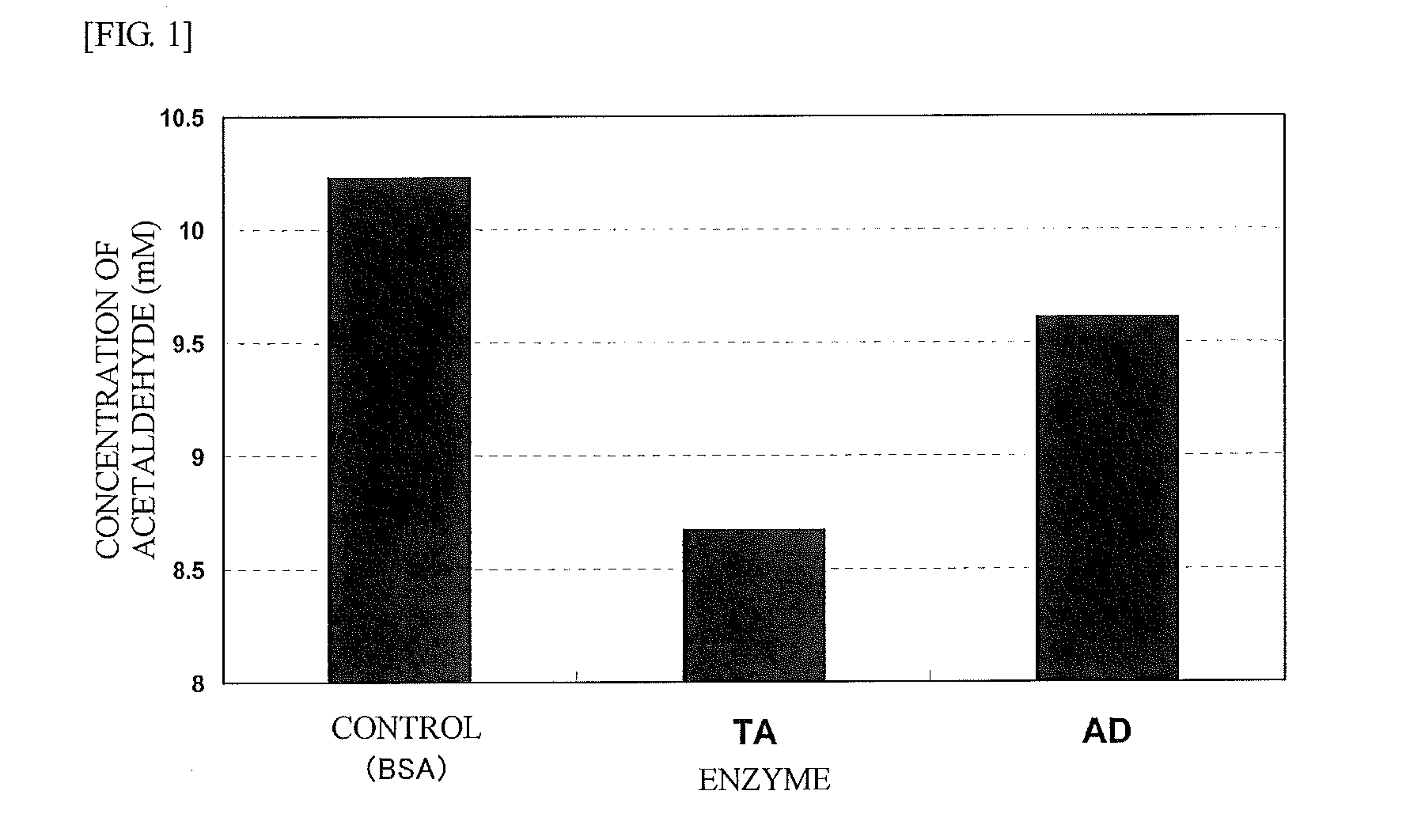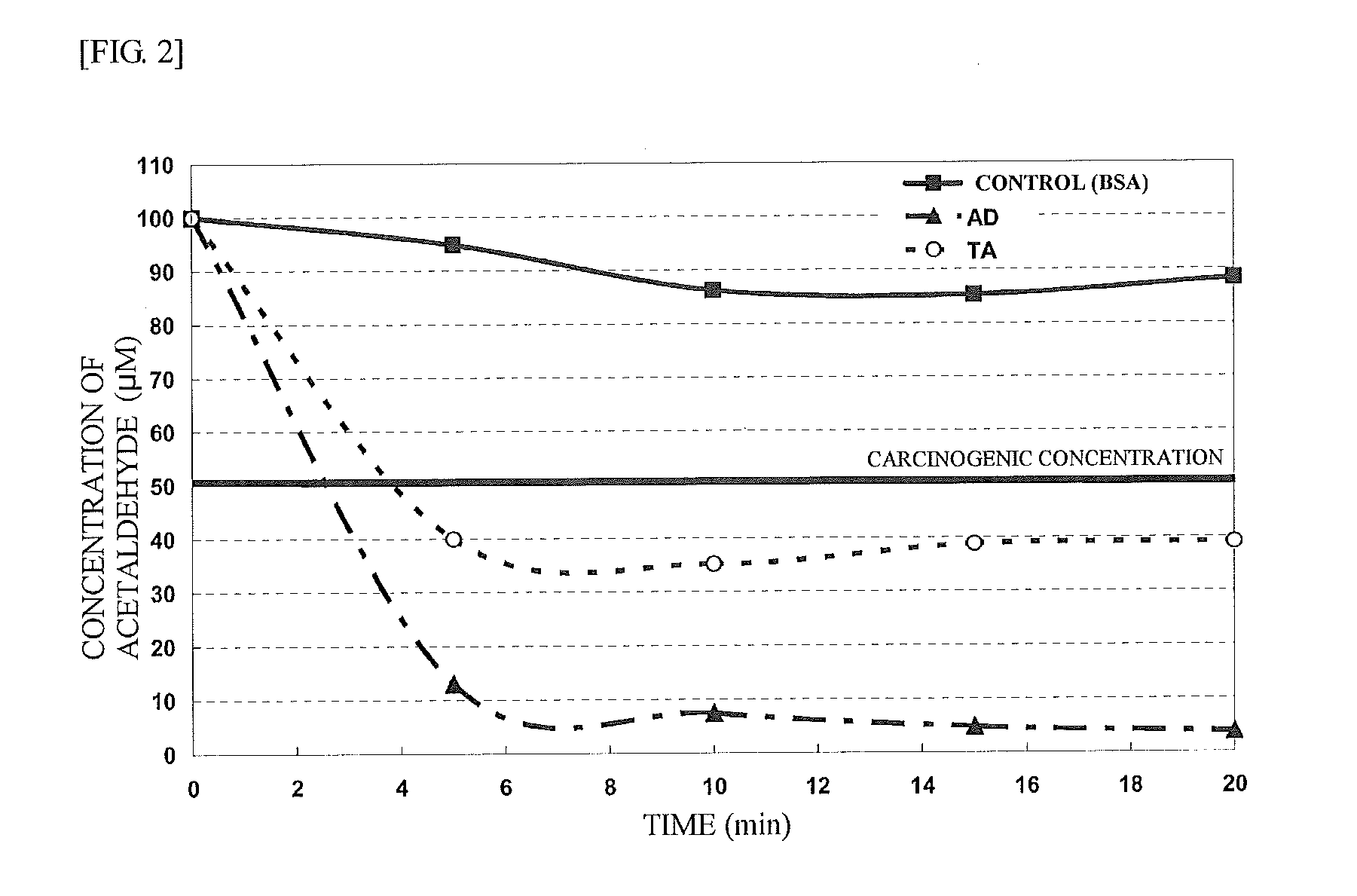Agent for reducing acetaldehyde in oral cavity
a technology of acetaldehyde and oral cavity, which is applied in the field of agent for reducing acetaldehyde in the oral cavity, can solve the problems of increasing the risk of diseases such as upper digestive system cancer, increasing and reducing the risk of esophageal cancer and stomach cancer. , to achieve the effect of reducing acetaldehyd
- Summary
- Abstract
- Description
- Claims
- Application Information
AI Technical Summary
Benefits of technology
Problems solved by technology
Method used
Image
Examples
examples
Artificial Saliva
[0039]Artificial saliva containing 0.51% w / v NaHCO3, 0.137% w / v K2HPO4, 0.088% w / v NaCl, 0.048% w / v KCl, and 0.044% w / v CaCl2.2H2O (see JP 2007-236233 A) was used. In the experiments, a two-fold concentration of artificial saliva (2× saliva sol.) was prepared and used.
(Detection of Acetaldehyde by Nash's Method)
[0040]A solution containing acetaldehyde (200 μL) was mixed with an equal amount of Nash's reagent (15% w / v ammonium acetate, 0.5% v / v acetic acid, 2% v / v acetylacetone) and subjected to reaction at 55° C. for 30 minutes, and was then subjected to measurement of absorbance at 388 nm. The initial concentration of acetaldehyde was 10 mM.
(Detection of Acetaldehyde by GC-MS)
[0041]Since acetaldehyde is a substance having very high reactivity, detection of acetaldehyde was performed after acetaldehyde was converted into a stable derivative. A solution containing acetaldehyde (800 μL) was mixed with 160 μL of 10 mg / mL pentafluorobenzylhydroxylamine (hereinafter, ref...
PUM
| Property | Measurement | Unit |
|---|---|---|
| pH | aaaaa | aaaaa |
| temperature | aaaaa | aaaaa |
| temperature | aaaaa | aaaaa |
Abstract
Description
Claims
Application Information
 Login to View More
Login to View More - R&D
- Intellectual Property
- Life Sciences
- Materials
- Tech Scout
- Unparalleled Data Quality
- Higher Quality Content
- 60% Fewer Hallucinations
Browse by: Latest US Patents, China's latest patents, Technical Efficacy Thesaurus, Application Domain, Technology Topic, Popular Technical Reports.
© 2025 PatSnap. All rights reserved.Legal|Privacy policy|Modern Slavery Act Transparency Statement|Sitemap|About US| Contact US: help@patsnap.com


